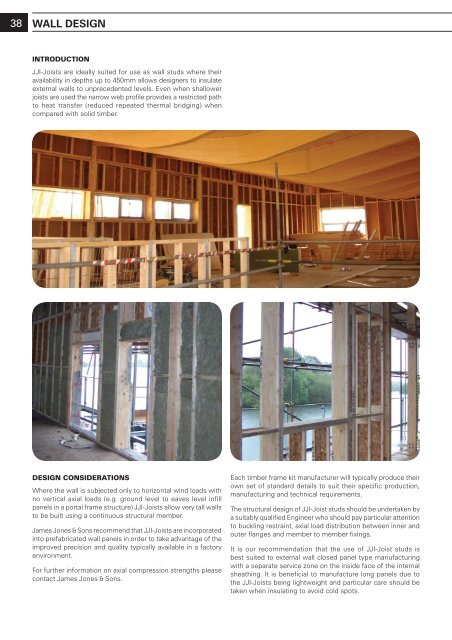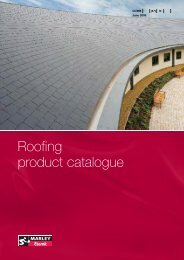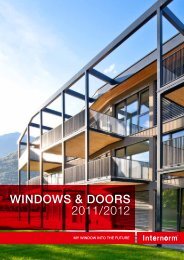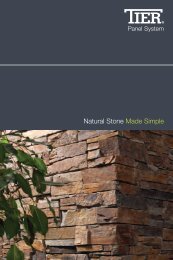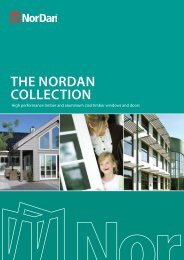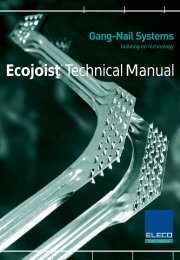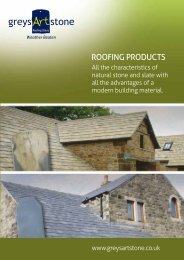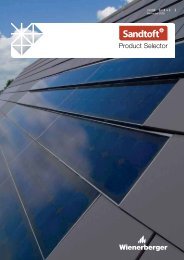You also want an ePaper? Increase the reach of your titles
YUMPU automatically turns print PDFs into web optimized ePapers that Google loves.
38 WALL DESIGN<br />
INTRODUCTION<br />
<strong>JJI</strong>-<strong>Joists</strong> are ideally suited for use as wall studs where their<br />
availability in depths up to 450mm allows designers to insulate<br />
external walls to unprecedented levels. Even when shallower<br />
joists are used the narrow web profile provides a restricted path<br />
to heat transfer (reduced repeated thermal bridging) when<br />
compared with solid timber.<br />
DESIGN CONSIDERATIONS<br />
Where the wall is subjected only to horizontal wind loads with<br />
no vertical axial loads (e.g. ground level to eaves level infill<br />
panels in a portal frame structure) <strong>JJI</strong>-<strong>Joists</strong> allow very tall walls<br />
to be built using a continuous structural member.<br />
James Jones & Sons recommend that <strong>JJI</strong>-<strong>Joists</strong> are incorporated<br />
into prefabricated wall panels in order to take advantage of the<br />
improved precision and quality typically available in a factory<br />
environment.<br />
For further information on axial compression strengths please<br />
contact James Jones & Sons.<br />
Each timber frame kit manufacturer will typically produce their<br />
own set of standard details to suit their specific production,<br />
manufacturing and technical requirements.<br />
The structural design of <strong>JJI</strong>-Joist studs should be undertaken by<br />
a suitably qualified Engineer who should pay particular attention<br />
to buckling restraint, axial load distribution between inner and<br />
outer flanges and member to member fixings.<br />
<strong>It</strong> is our recommendation that the use of <strong>JJI</strong>-Joist studs is<br />
best suited to external wall closed panel type manufacturing<br />
with a separate service zone on the inside face of the internal<br />
sheathing. <strong>It</strong> is beneficial to manufacture long panels due to<br />
the <strong>JJI</strong>-<strong>Joists</strong> being lightweight and particular care should be<br />
taken when insulating to avoid cold spots.


